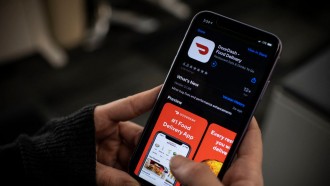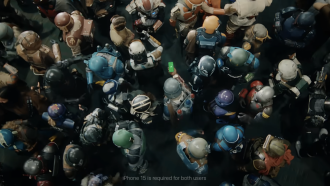Global Wireless Solutions President and CEO Dr. Paul Carter shared in a Tech Times Exclusives interview how wireless network technology continued to change people's lives nowadays and defined GWS' standard contribution to digital inclusion.
Global Wireless Solutions or GWS provides wireless network benchmarking, analysis and testing. This measures and evaluates network performance by conducting controlled and scientific tests combined with consumer research. In part of its services, GWS test not just indoor connections but also outdoors at venues, on roads - everywhere consumers use their device, everywhere consumers live, work and play.
Dr. Paul Carter, from an Employee to building Global Wireless Solutions
In his interview with Tech Times, Dr. Paul Carter shared that he was once working at a company which was basically for designing or planning wireless networks - having a team of people doing the radio frequency component of that.
Carter said, "It was kind of a broad area and I felt that I could start do a better job of it myself, and that we could focus on it because I was quite keen on collecting data."
Whereas that previous role was more like designing and planning a network, as opposed to his vision of collecting data from an existing network and then trying to understand what that tells about the performance of the network.
Birth of Global Wireless Solutions
Global Wireless Solutions was founded in 1996 and focused on the network performance testing component in around 2000. That was when it started doing nationwide benchmarking for Nextel that was basically the start of its nationwide programs at that point - essentially, and it had been collecting data on a nationwide level, domestically in the United States.
Read Also: Internet Is Getting Slower Worldwide; Will Coronavirus Break The Internet Connection?
Global Wireless Connection: Towards 'Digital Inclusion'
People in the past, especially in the rural areas, found it challenging to have a stable and fast connection - more on having the need for daily information, such as school and medical-related updates and facts.
Thus, Carter sees GWS as a tool for basic coverage, highlighting that digital inclusion should be observed in any world. He added that digital inclusion is allowing people to connect and have the wireless connection that they need, specifically in terms of daily demands.
"Some of the services that 5G can bring is telehealth and remote learning, as people need adequate service nowadays. You do not need the fastest service in the world but you need to have adequate service," Carter highlighted.
Global Wireless Connection: Benchmarking, Analysis, and Testing
According to Carter, the goal is to understand how wireless networks perform.
"Essentially, we have commercial test equipment that's placed inside test vehicles, and then we connect smartphones up to that test equipment, plus some scanner information and a smaller amount of data and then we drive around, we make measurements on all the different wireless networks," Carter highlighted.
With this, they make a phone call and hold that call for a time, then pull it down to see if the call is successful. This is the same thing with data sessions as GWS look for speeds of the network - as everyone talks about network speeds these days.
"We do different types of tests - video tests, voice tests, but it's all about trying to mimic a customer experience on the network and the goal is to test the network performance as opposed to necessarily testing the performance of the phone that you use," Carter shared, adding that the phone gives the people the closest experience if they like the network.
GWS does this across the country. Carter pinpointed that literally, in terms of road miles, they had driven 30 million miles or more these days. In terms of actual data collection, they collected a million miles a year in the U.S., providing these services for around 25 countries in the world. It was all about trying to access the network performance,
5G Networks: Expectations and Misconceptions
5G is promising faster speeds dramatically, lower latency, network slicing, and private network. Carter ultimately thinks that it allowed more capacity than what people experienced in the past.
However, with the fact that 5G was deployed at the end of 2019 and COVID began worsely affecting the world in 2020, other countries like the United Kingdom people think that there is a direct connection between 5G and COVID. Thus, people think 5G is gonna be more dangerous than previous technologies.
Carter wanted people to think that 5G happened not just for faster speed but for the public information to be protected.
Related Article: 4 Reasons Why 5G Will Be a Must-Have Upgrade on the Next iPad Pro
This article is owned by Tech Times
Written by Riene Dimakiling
BE UPDATED! Visit https://www.techtimes.com/ now!
Visit https://www.gwsolutions.com/ to learn more about Global Wireless Solutions' services and products.
Like our Facebook Page: https://www.facebook.com/TechTimesNews/
Follow us on Twitter: https://twitter.com/TechTimes_News





